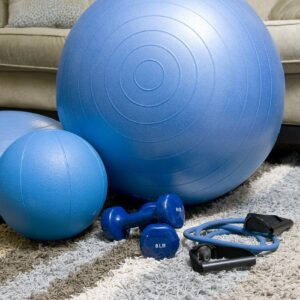Hey there! If you’re looking to start your calisthenics journey from the comfort of your own home, then you’ve come to the right place. In this video by Adam Frater, he shares valuable insights on how to begin calisthenics as a complete beginner without any equipment. Adam also provides three helpful pieces of advice for beginners in calisthenics. Plus, he introduces Project Shred, a fantastic program that includes 30 days of clean eating, daily calisthenics workouts, and lifestyle habits to help you get shredded while building strength and body control. Be sure to check out the related calisthenics tutorials and exercises for shredded abs as well. Adam Frater’s social media handles are also included in the video, so you can follow him on Instagram and subscribe to his YouTube channel for more awesome content. So, if you’re ready to take the first step towards your calisthenics journey, let’s dive right in!
In this captivating video, Adam Frater guides you on how to kickstart your calisthenics journey at home, even if you’re a complete novice. Discover the importance of not skipping foundational steps in calisthenics to avoid hitting frustrating plateaus. Adam emphasizes controlling your movement and picking up speed and tempo in the range of motion. Additionally, he highlights the significance of building foundational strength in the scapula (shoulder blade) for proper movement and strength in calisthenics. Core strength and stability are also crucial for calisthenics exercises, and Adam shares techniques for progressing through partial movements and negatives to build strength. Don’t miss the bonus clip on utilizing chairs as equipment for modified pull-ups that target scapula strength. By the end of this video, you’ll have gained valuable knowledge and be one step closer to mastering calisthenics at home. Like, subscribe, and share the video to support Adam’s journey on YouTube, and stay tuned for more informative content coming your way!
How to Start Calisthenics at Home for Beginners (No Equipment)
Introduction to Calisthenics
Calisthenics is a form of exercise that utilizes bodyweight movements to build strength, flexibility, and overall fitness. It involves performing exercises such as push-ups, squats, and planks without the need for any equipment. Calisthenics can be done anywhere, making it a convenient option for those who want to workout at home. Whether you are a complete beginner or an athlete looking to add a new workout routine to your repertoire, calisthenics has something to offer for everyone.
Benefits of Calisthenics
There are several benefits to incorporating calisthenics into your fitness routine.
- Improved Strength and Muscle Definition: Calisthenics exercises require you to engage multiple muscle groups simultaneously, leading to increased overall strength and muscle definition. By consistently performing exercises such as push-ups, squats, and lunges, you can build strength in your upper body, lower body, and core.
- Increased Flexibility and Mobility: Many calisthenics exercises require a wide range of motion, which can help improve flexibility and mobility. Movements such as lunges, hamstring stretches, and shoulder mobility exercises can help increase your overall flexibility and reduce the risk of injury.
- Enhanced Body Control and Coordination: Calisthenics exercises require you to control your bodyweight through various movements, which improves body control and coordination. By practicing exercises such as handstands, planche progressions, and L-sits, you can enhance your body control and develop better coordination.
- Efficient and Time-Saving Workout: Calisthenics workouts can be highly efficient, as they target multiple muscle groups simultaneously. This means you can get a full-body workout in less time compared to traditional weightlifting workouts. Additionally, since no equipment is required, there is no need to spend time setting up machines or weights.
- Minimal Equipment and Cost: One of the major advantages of calisthenics is that it requires minimal equipment. In fact, many calisthenics exercises can be done without any equipment at all. This makes it an affordable option for those who don’t want to invest in expensive gym memberships or equipment.
Adam Frater and Project Shred
Adam Frater is a calisthenics athlete and fitness enthusiast who has gained a significant following on social media platforms such as Instagram and YouTube. He is known for his comprehensive approach to calisthenics and his commitment to helping beginners learn the fundamentals of this form of exercise.
One of Adam Frater’s popular programs is Project Shred, which is designed to help individuals achieve their fitness goals through a combination of clean eating, daily calisthenics workouts, and the adoption of healthy lifestyle habits. By following the Project Shred program, individuals can not only build strength and improve their physique but also develop sustainable habits that contribute to their overall well-being.
Importance of Foundation
Building a strong foundation is essential in any fitness journey, and calisthenics is no exception. Skipping foundational steps in calisthenics can lead to plateaus and hinder progress. By focusing on building foundational strength, individuals can lay the groundwork for future progress and skill development.
Starting with fundamental movements such as push-ups, squats, and planks allows beginners to develop proper form and technique. It also helps in establishing a mind-muscle connection, which is important for effectively engaging the target muscles during exercises. By mastering these foundational movements, individuals can progress to more advanced exercises with confidence and efficiency.
Controlling Movement and Tempo
Controlling movement and tempo is a key principle in calisthenics training. It involves being able to perform exercises with proper form, control, and range of motion. Many people make the mistake of rushing through exercises, sacrificing form for the sake of completing more repetitions. However, this can lead to ineffective workouts and even injuries.
In calisthenics, it is important to focus on maintaining control throughout the entire range of motion. For example, in a push-up, the movement should be controlled both on the way down and on the way up. By maintaining a slow and controlled tempo, individuals can engage the target muscles effectively and maximize the benefits of the exercise.
Gradually increasing speed and tempo can be incorporated as individuals gain strength and confidence in their movements. However, it is important to prioritize proper form and control before adding speed.
Building Strength in Scapula
The scapula, also known as the shoulder blade, plays a crucial role in calisthenics movements. Having strength and control in the scapula is essential for exercises such as pull-ups, push-ups, and dips.
Understanding the function of the scapula is key to building strength in this area. The scapula is responsible for protraction and retraction, which involves moving the shoulder blades forward and backward. Exercises that target scapula strength include scapular push-ups, scapular pull-ups, and scapular dips. By focusing on these exercises, individuals can develop the necessary strength and stability in the scapula to progress in calisthenics movements.
Core Strength and Stability
Core strength and stability are crucial for performing various calisthenics exercises effectively. The core muscles, including the rectus abdominis, obliques, and transverse abdominis, provide stability to the spine and pelvis during movements.
Having a strong core helps maintain proper form and alignment during exercises such as planks, handstands, and leg raises. Core exercises specific to calisthenics include hollow body holds, L-sits, and dragon flags. By incorporating these exercises into your training routine, you can develop a strong and stable core, which will improve your overall performance in calisthenics movements.
Progression through Partial Movements and Negatives
Progressing in calisthenics involves gradually increasing the difficulty of exercises to continually challenge your muscles and make progress. One effective method for progression is through partial movements and negatives.
Partial movements involve performing a portion of a full exercise, focusing on the most challenging part. For example, if you are working towards a full pull-up but can’t perform one yet, you can start with partial pull-ups, focusing on the lowering phase of the movement. This allows you to build strength in the specific range of motion required for the full exercise.
Negatives, on the other hand, involve focusing on the eccentric, or lowering, phase of an exercise. This can be done by using a resistance band or by jumping to the top position of the exercise and slowly lowering yourself down. Negatives are effective for building strength and developing control in the specific exercise you are working towards.
By incorporating partial movements and negatives into your training routine, you can gradually progress towards more advanced calisthenics exercises.
Using Chairs for Modified Pull-Ups
Pull-ups are a challenging exercise that targets the muscles of the upper body, including the back, biceps, and lats. Engaging the scapula is one of the most challenging aspects of a pull-up, especially for beginners.
One technique to assist in building the necessary strength in the scapula for pull-ups is by using chairs as modified pull-up bars. By positioning chairs on each side of a door frame or sturdy structure, individuals can perform assisted pull-ups by placing their feet on one of the chairs. This allows for controlled movements and gradual progression in strength.
By incorporating this modified pull-up exercise into your routine, you can target the muscles involved in pull-ups and gradually build the strength needed to perform multiple pull-ups unassisted.
Conclusion
Starting calisthenics at home as a beginner without any equipment is entirely feasible. By focusing on building a strong foundation, controlling movement and tempo, and targeting specific areas such as the scapula and core, beginners can progress and achieve their fitness goals.
Additionally, utilizing techniques such as partial movements and negatives can help individuals gradually progress towards more advanced exercises. Modified pull-ups using chairs can assist in building the necessary strength in the scapula for performing unassisted pull-ups.
Remember to prioritize proper form, listen to your body, and progress at your own pace. Calisthenics is a versatile and effective form of exercise that can help you build strength, flexibility, and overall fitness without the need for any equipment. So, get started, stay consistent, and enjoy your calisthenics journey at home!




